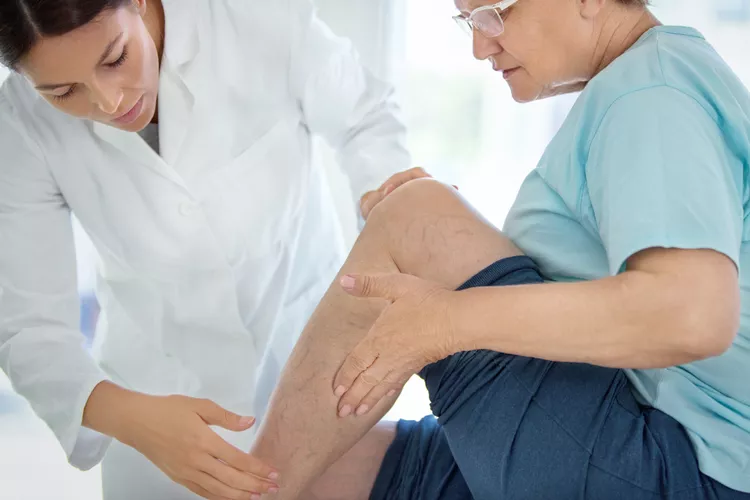Introduction
As we age, maintaining vein health becomes increasingly important. The elderly are particularly susceptible to venous disorders such as varicose veins, chronic venous insufficiency (CVI), and deep vein thrombosis (DVT). This comprehensive guide explores effective strategies for managing vein health in the elderly, focusing on prevention, diagnosis, and treatment.
Understanding Vein Health in the Elderly
Why Vein Health Declines with Age
As we age, the veins lose elasticity, and the valves within them may weaken. This can lead to poor blood circulation and the pooling of blood in the veins, causing various venous disorders. Factors such as reduced physical activity, hormonal changes, and chronic health conditions also contribute to declining vein health in the elderly.
Common Venous Disorders in the Elderly
- Varicose Veins: Enlarged, twisted veins that are often visible under the skin and can cause discomfort and swelling.
- Chronic Venous Insufficiency (CVI): A condition where the veins are unable to efficiently return blood to the heart, leading to swelling, pain, and skin changes.
- Deep Vein Thrombosis (DVT): The formation of blood clots in the deep veins, typically in the legs, which can lead to serious complications if not treated promptly.
Preventive Measures for Vein Health
Regular Physical Activity
Regular physical activity is crucial for maintaining vein health. Exercise helps improve blood circulation, strengthens the muscles that support the veins, and prevents blood from pooling in the legs.
- Tip: Engage in low-impact exercises such as walking, swimming, and cycling. Aim for at least 30 minutes of moderate exercise most days of the week.
Healthy Diet and Hydration
A balanced diet rich in nutrients and proper hydration can significantly impact vein health. Certain foods and beverages can improve circulation and reduce inflammation.
- Tip: Include plenty of fruits, vegetables, whole grains, and lean proteins in your diet. Stay hydrated by drinking plenty of water throughout the day.
Weight Management
Maintaining a healthy weight is essential for reducing the strain on your veins. Excess weight can increase the pressure on the veins in your legs, leading to varicose veins and other venous disorders.
- Tip: Follow a balanced diet and regular exercise routine to maintain a healthy weight.
Avoid Prolonged Sitting or Standing
Prolonged periods of sitting or standing can exacerbate venous disorders. It’s important to move around regularly to promote blood circulation.
- Tip: Take breaks to walk around and stretch your legs if you have to sit or stand for long periods.
Wear Compression Stockings
Compression stockings apply pressure to the legs, helping to improve blood flow and reduce swelling. They are particularly beneficial for individuals with chronic venous insufficiency.
- Tip: Wear compression stockings during the day, especially if you spend long periods standing or sitting.
Diagnosing Venous Disorders
Recognizing Symptoms
Early detection of venous disorders is crucial for effective management. Common symptoms include swelling, aching, and a heavy sensation in the legs, visible veins, skin changes, and leg ulcers.
- Tip: Consult a healthcare provider if you notice any of these symptoms.
Diagnostic Tests
Various diagnostic tests can help identify venous disorders. These include duplex ultrasound, venography, and magnetic resonance venography (MRV).
- Tip: Follow your healthcare provider’s recommendations for diagnostic testing to determine the severity of your condition.
Treatment Options for Venous Disorders
Lifestyle Modifications
Lifestyle modifications are often the first line of treatment for managing venous disorders. This includes exercise, diet, weight management, and avoiding prolonged sitting or standing.
Minimally Invasive Procedures
Several minimally invasive procedures are available for treating venous disorders in the elderly. These include sclerotherapy, endovenous laser therapy (EVLT), and radiofrequency ablation (RFA).
Surgical Interventions
In severe cases, surgical interventions such as vein stripping and ligation may be necessary. These procedures are typically reserved for individuals who do not respond to other treatments.
Caring for Existing Venous Disorders
Wound Care for Venous Ulcers
Venous ulcers are a common complication of chronic venous insufficiency. Proper wound care is essential for healing and preventing infection.
- Tip: Clean the ulcer with a gentle saline solution and apply a prescribed dressing to protect the wound. Follow your healthcare provider’s instructions for wound care and dressing changes.
Regular Monitoring and Follow-Up
Regular check-ups with a vein specialist are crucial for monitoring the progress of venous disorders and making necessary adjustments to your treatment plan.
- Tip: Schedule follow-up appointments as recommended by your healthcare provider to ensure optimal care and healing.
Conclusion
Managing vein health in the elderly requires a comprehensive approach that includes preventive measures, early diagnosis, and appropriate treatment options. By maintaining a healthy lifestyle, recognizing symptoms early, and following your healthcare provider’s recommendations, you can effectively manage venous disorders and improve your quality of life. Always consult with a healthcare provider for personalized advice and treatment options tailored to your specific needs.

